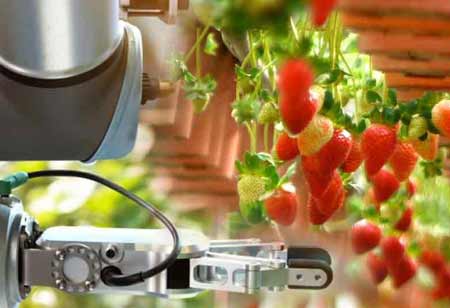Thank you for Subscribing to Agri Business Review Weekly Brief
How Modern Agriculture Technology Enhances Farming Operations
The agricultural sector has undergone significant transformations from labour-intensive to smart and data-driven industries.

By
Agri Business Review | Friday, September 30, 2022
Stay ahead of the industry with exclusive feature stories on the top companies, expert insights and the latest news delivered straight to your inbox. Subscribe today.
Modern agriculture technology with innovative tools and devices is rapidly revolutionising the agricultural business, helping farmers to derive more efficient and productive outcomes.
FREMONT, CA: The agricultural sector has undergone significant transformations from labour-intensive to smart and data-driven industries. Modern agriculture technologies such as crop monitoring drones, farm management software, and livestock measuring sensors are some of the reasons for this radical change. These tools are improving crop production in a world facing depleting resources. The agricultural sector has undergone significant transformations, transitioning from a labour-intensive to a smart and data-driven industry.
With the increasing world population, these technologies are also becoming more significant for the production of double food quantities while also balancing the finite resources available. This calls for the need for modern agricultural technology to play a vital role in making it possible. The opportunities new tools and software can offer farmers will be imperative to the agriculture industry's future. Thus, modern agriculture technology is improving farming operations, taking the industry to the next level of innovation with its advancements.
Connected Technologies Preserving Resources
Keeping track of resources’ quality and lifespan is becoming difficult, especially when farms are dotted throughout a large network of locations. Connected technologies have reduced these challenges, enabling farmers to acquire real-time information on the state of their resources and goods, minimising unwanted waste.
Using an advanced sensor suite provides grain managers with actionable insights about their stored grain. Live temperature and humidity information of grain mounds help farmers alter circumstances, ensuring their grain is stored in the best conditions every time.
Machine Learning Algorithms Promote Improved Soil Health
Pests and diseases cause considerable losses for farmers by resulting in underperforming harvests. The sources of these lethal yields are typically found in the soil where crops are grown. The assistance of machine learning algorithms provides the best solution for this concern. Innovative machine learning discovery platforms centre a deep understanding of soil and detect diseases and pests' symptoms to propose what herbicides will eliminate the issue.
Machine learning algorithms also assist farmers in escalating efficiency regarding chemical applications to ward off pests and diseases. Smart trap systems are equipped with pheromones, allowing farmers to see the insect population in real time via apps. By automating the error-prone process of determining the pesticides’ amount required, such systems save farmers' higher costs from insect damage.
Autonomous Robots
Automation in farming makes farms more efficient with reduced prices for customers, lowers environmental farm footprints and slashes labour costs. Thus, many traditional agriculture companies are embracing farm automation into their processes, integrating autonomous tractors, robotic harvesters, automatic watering, and seeding robots.
Companies have successfully developed autonomous robot-as-a-service (RaaS) tools using AI and robotics innovations to monitor, digitise, and analyse assets in real time. Currently, the automated robotic data platform and drone stand as the only drone systems operating continuously and unattended in the AgTech industry.
Modern agriculture technology has established a firm grip on agriculture advancement within a few years. This revolutionary approach has eliminated the depletion of farm efficiency and the devastating impact of crops on the environment and has saved the scarce land necessary to grow crops in the future.





